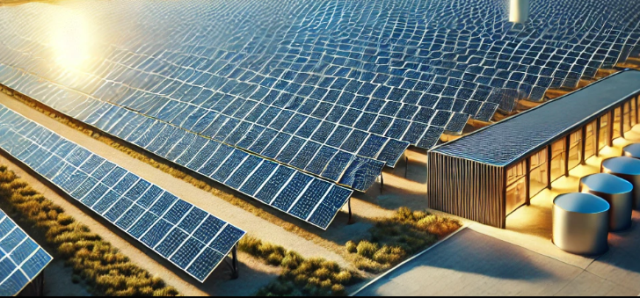Renewable energy is set to dominate the global power landscape, with total capacity projected to more than double by 2030, according to the International Energy Agency’s (IEA) latest Renewables 2025 report released on October 7. Despite challenges in supply chains, financing, and grid integration, the world’s transition to clean energy continues at a record pace — led overwhelmingly by solar power.
The IEA forecasts an increase of 4,600 gigawatts (GW) in renewable capacity by 2030 — equivalent to the combined power generation capacity of China, the European Union, and Japan. This historic expansion underscores the strong momentum behind global decarbonization efforts, as countries race to meet net-zero targets and strengthen energy security.
Solar PV to Lead Global Growth
Solar photovoltaic (PV) energy will account for around 80 percent of new renewable capacity additions through 2030, cementing its position as the world’s fastest-growing power source. Falling module costs, faster permitting, and large-scale rooftop deployments are driving this surge. Emerging economies such as India, Saudi Arabia, Pakistan, and Southeast Asian nations are accelerating solar investments as costs fall below fossil fuel alternatives.
Wind energy will continue to expand, though its short-term outlook is weaker than last year due to supply chain disruptions, rising costs, and policy shifts in major markets. Offshore wind growth projections are down by nearly 25 percent compared with last year’s IEA forecast.
India to Become the Second-Largest Market
India’s renewable energy sector is on track for record growth, positioning it as the second-largest renewables market after China. Strong policy support, national solar missions, and competitive auction programs are helping India achieve — and possibly exceed — its 2030 clean energy goals.
In contrast, the outlook for the United States and China has softened slightly due to policy adjustments. The early phase-out of U.S. federal tax incentives and China’s shift from fixed tariffs to auctions have lowered growth expectations. However, these slowdowns are partially offset by surging deployment in Europe and emerging economies, where new policies, faster permitting, and corporate power purchase agreements (PPAs) are accelerating renewable additions.
Diversification and Grid Challenges
The IEA report warns that the global solar supply chain remains highly concentrated in China, with over 90 percent of manufacturing capacity expected to remain there through 2030. While investments in diversification are increasing in the U.S., Europe, and India, supply chain risks persist.
Meanwhile, the rapid rise of variable renewables such as solar and wind is straining electricity grids. Curtailment and negative pricing events are becoming more frequent, underscoring the urgent need for investment in grid modernization, storage solutions, and flexible generation. Pumped-storage hydropower and battery storage are expected to see faster growth — nearly 80 percent higher than in the previous five years.
Expanding Role in Transport and Heating
Beyond power generation, renewables are making gradual inroads into transport and heating. The IEA projects renewables’ share in global transport energy to rise from 4 percent to 6 percent by 2030, driven by electric vehicles (EVs) and biofuels in markets such as China, Brazil, and Indonesia. In heating, their share is forecast to increase from 14 percent to 18 percent, aided by the electrification of buildings and industries.
Strong Corporate Confidence in Renewables
Despite near-term challenges, corporate confidence in renewables remains resilient. Most major developers have maintained or raised their 2030 deployment targets, signaling optimism about long-term growth. Corporate PPAs, utility-scale contracts, and merchant solar plants are expected to account for 30 percent of renewable capacity expansion through 2030 — double their share from last year.
A Defining Decade for Clean Energy
“The growth in global renewable capacity in the coming years will be dominated by solar PV – but with wind, hydropower, bioenergy, and geothermal all contributing too,” said IEA Executive Director Fatih Birol. “As renewables’ role in electricity systems rises, policymakers must focus on grid integration, supply chain security, and investment stability.”
The IEA’s Renewables 2025 report reinforces that while challenges remain, the global energy transition is irreversibly accelerating. With solar leading the charge, the next five years will define how fast — and how sustainably — the world can power itself with clean energy.
Baburajan Kizhakedath

